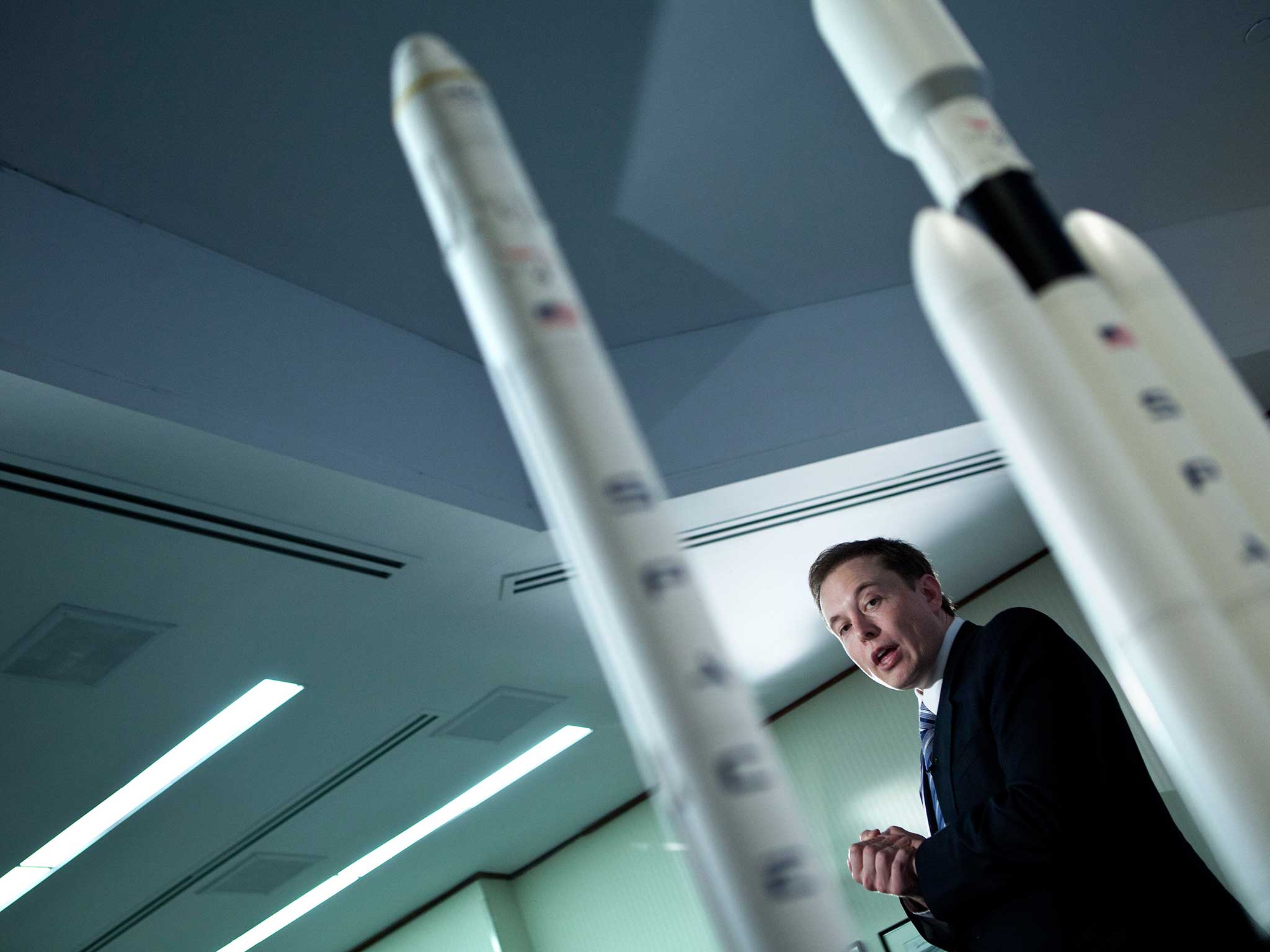Elon Musk plans to drop nuclear bombs above Mars to give it two new suns so it can keep warm
The suns would use a technology that hasn’t been invented yet to send out huge ‘fusion bombs’ every few seconds, Musk says

Elon Musk wants to launch two huge fusion bombs into the sky above Mars, which will explode every few seconds, so that the planet can be warm enough to allow humans to live there.
Musk was described as a “supervillain” after he said last month that he wanted to drop nuclear bombs on the planet to get it ready to colonise it. But he has now elaborated on that plan — confirming that the bombs aren’t to be dropped on the planet, but hover above it, creating “tiny pulsing suns”.
"What I was talking about," Musk said, "was having a series of very large, by our standards, but very small by calamity standards, essentially having two tiny pulsing suns over the poles. They’re really above the planet. Not on the planet."
Asked whether the plan would be difficult to make happen, Musk said: “Yeah, absolutely, no problem”. The entrepreneur was speaking at an event for Solar City, his energy company.
Mars is currently inhospitable to humans because the environment is too thin and too cold for us to live there. One way of fixing that would be to put greenhouse gases into the planet’s atmosphere, triggering an intentional climate change that would make it habitable.
But Musk wants to do that using the two little stars, instead. The suns would warm the planet and make the frozen carbon dioxide warm into gas — that would help create an atmosphere more like Earth’s, so that humans could live there long term.
The stars use technology that isn’t invented yet to “send large fusion bombs over the poles” every few seconds, Musk said. Eventually they would “blink out”, and you could send more up to keep the process going, though eventually the climate change would mean that it was self-sustaining.
Musk’s plan is part of his broader goal for humans to travel to and then colonise Mars.

Join our commenting forum
Join thought-provoking conversations, follow other Independent readers and see their replies
Comments